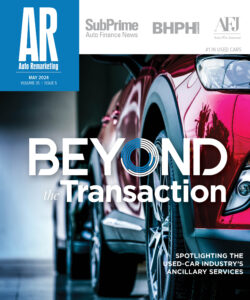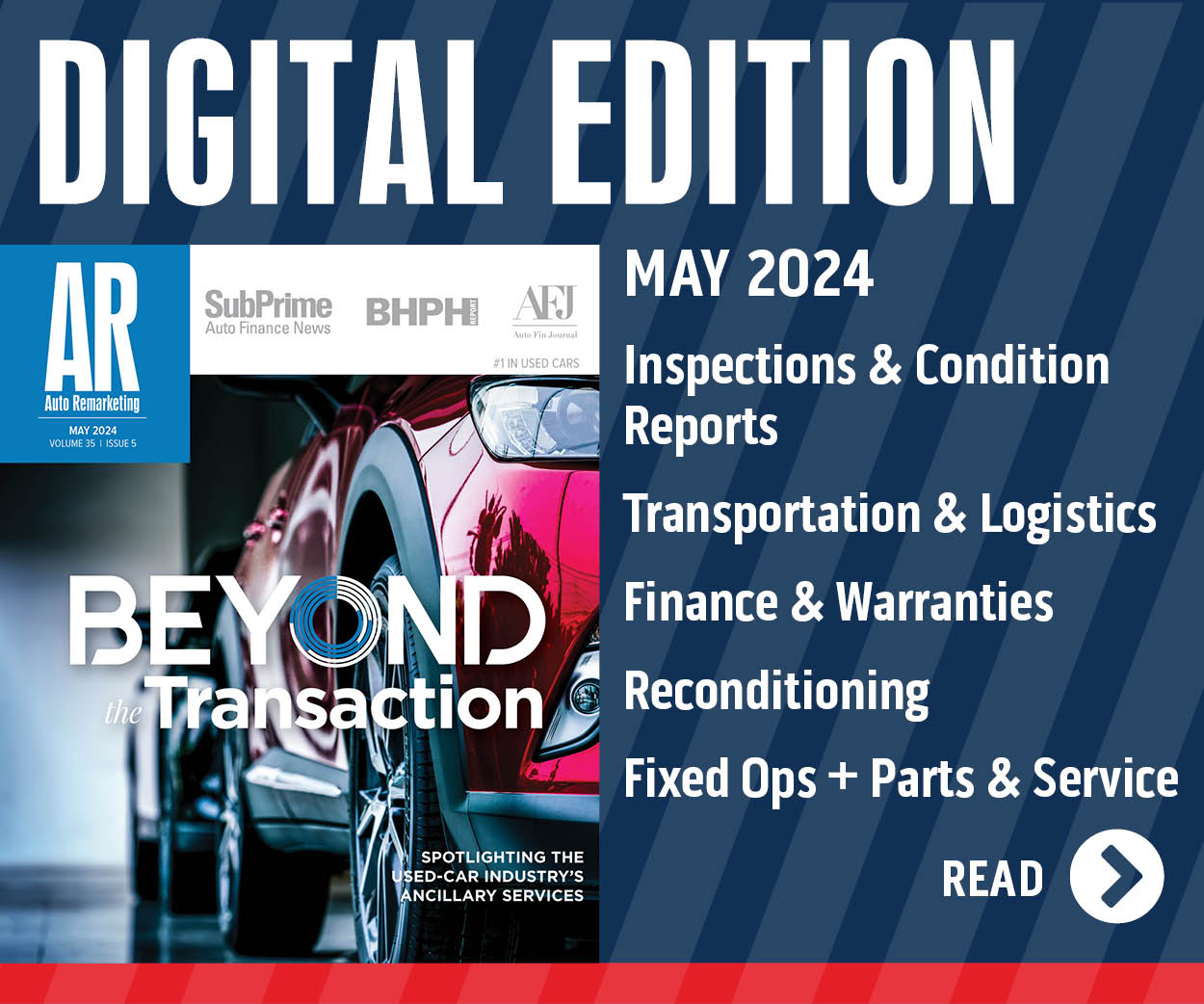CNW Projects How High Residual Losses Could Climb, Reports on Used-Vehicle Trends
BANDON, Ore. — The combined residual value losses on leases written between 2005 and June 2010 are expected to be greater than $10.4 billion, a recent CNW Market Research analysis discovered.
CNW president Art Spinella noted that the 2010 figure is adjusted based on "added unit sales due to leasing, lessee purchases of leased vehicles, production profits, plant utilization improvements, certified pre-owned growth and a host of other positive factors and represents about 23 percent of the variance between contracted residual values and actual used-vehicle prices of those leased units."
Furthermore, the focus of the study was on 36- and 42-month leases, which tend to be the most popular.
Though this estimate is seemingly staggering, consider that in 2000 alone, residual value loses were at $10 billion, CNW stressed. The more recent losses are due to economic reasons.
"At that time (the year 2000), subvented leases with virtually no interest rate and purposefully overstated residual values were coming to their end of term (EOT) and hammering lessor income," Spinella commented. "Lessors knew it was coming and virtually all began pulling out of the lease market."
He continued: "The latest round of losses can be attributed to economics rather than competition. Leases written in 2005 and 2006 had generally conservative residual values. CNW, at the time, estimated they were slightly bloated but not overly so."
Here's the linchpin, though. When the terms of those 2005 and 2006 leases wrapped up in 2008 and 2009, respectively, the meltdown in the both used and new-vehicle markets was occurring and used values tanked.
Take the following price comparison CNW offered, for instance. The average contracted three-year residual value for a lease written in January 2005 was $16,978.
"After the aforementioned adjustments, the variance was less than $160, well within the range of good business practices," Spinella noted.
The picture changes, though, when one starts looking at data from January 2007. At the time, the auto market was in relatively good shape. The contracted three-year residual average was $20,747.
"When those January leases came due in January through June of 2010, however, the actual value on the wholesale market was in the mid-$17,000 range," Spinella illustrated. "After adjustments, the loss per unit was up to $800, just on the border of significantly damaging the lessor's bottom line."
Offering some more context, Spinella indicated that the leasing is once more on the upswing "And for good reasons," he said. In fact, lease penetration in the first half of July was at 23.4 percent, up 21.3 percent for the same period of July 2009.
Despite the upswing, "subvention is casting dark shadows around the edges. Some automaker captive finance companies are building low-payment leases with virtually no interest and puffed-up residuals then offering the lease to customers with FICO scores well-below 700," he noted, sharing the example a Toyota lease program where lessees only need a credit score of 660.
"The industry hasn't reached a critical-mass stage of subvention, but the warning signs are there," Spinella shared.
Changes Among Teen Drivers
Continuing on, CNW also looked at what it considers to be dwindling used-vehicle purchases for teenagers. The company expects that there will only be 4.2 million used cars bought for teenage drivers this year, down considerably from the 7.5 million purchased in 2005.
"And parents are pulling back on buying their teenagers — especially girls — cars at younger ages," Spinella noted.
Teens have also become more inclined to drive vehicles from the Big 3. A major reason for this is that domestic vehicles tend to be less expensive than similar-sized import counterparts.
Consider that five years ago, the proportion of vehicles bought for teens that were from Asian brands was at 45.6 percent. Now, it stands at just more than 40 percent.
Meanwhile, five years ago, 51.2 percent of purchases for teens were from the Big 3, and that proportion has climbed to almost 57 percent.
It also appears consumers are trying to save money through the types of vehicles bought for teens. The share of budget-class vehicles has climbed from 12.4 percent of the market to 23.64 percent in the last five years. Moreover, compact cars now represent about a third of sales for teenage drivers, up from 25.1 percent in 2005.
The share of large SUVs has dwindled from 4.7 percent to 1.88 percent.
What's more, parents are not spending as much on used vehicles for their teenage children.
Five years ago, the average used-vehicle price paid for all ages was $8,021. The average price paid for a used car for a teenager was $7,469, which represented over 93 percent of the industry average.
Now, the average price paid on used vehicles for teenage drivers is $6,734, and is just 80.22 percent of the average price in the industry, which is $8,394.
In other words, used prices overall may have gone up since 2005, but the amount consumers are paying on used vehicles for teenage drivers has gone down.
There also is a smaller proportion of teens making full payments to their parents for the vehicle. Just 15.83 percent currently do so, compared with 20.6 percent in 2005.
It is more likely that parents make the full payment this year (44.37 percent) than in 2005 (43.5 percent).
Spinella pointed out that more than a quarter (27 percent) had no full- or part-time job in the last year. In 2005, only 11.25 percent were in the same boat.
"One of the most telling statistics about the market change is the share of males and females who are driving their primary vehicle choice," Spinella noted. "Among male teens, barely 28.5 percent are behind the wheel of their desired vehicle compared to 46 percent five years ago, while fewer than half of female teens are driving their primary choice compared to nearly 70 percent in 2005.
"Clearly parents have wrested control over the type of vehicle purchased regardless of what their teenage sons and daughters would prefer to drive," he continued.
July's Used Market
Based on the pace from the first half of the month, July's used-vehicle sales don't look too promising for franchise dealers. These dealers are expected to move around 1.27 million used units, down from about 1.42 million used vehicles a year ago.
Meanwhile, used sales for independent dealers are projected to climb 9.4 percent to about 1.37 million units sold. As for private-party used sales, these are expected to come in at 1.14 million, off from about 1.18 million last year.
Year-to-date, total used sales have reached roughly 21.77 million vehicles sold, up from about 21.21 million at this point of 2009.
As far as pricing, even though average prices have dipped about 2 percent from June, they are faring much better on a year-over-year basis. Franchise dealers have seen their prices climb 1.6 percent from July 2010 and independents' prices are up 5.3 percent.
"The sales dip in July can be attributed to a pair of factors for franchised dealers: First and foremost, continued lack of inventory and, secondarily, a closing gap between new- and used-car transaction prices in the important two- to five-year-old used bracket," Spinella noted. "This is the lifeblood of used-car operations at franchised dealerships.
"But incentive levels on new vehicles, along with lower credit score requirements for leasing, for example, bring monthly payments within 60 percent for a used vehicle compared to a comparable new model," he added.
Moving on, CNW also discovered via its Purchase Path studies that there has been a growing aversion among consumers to offer trade-ins, "at least at price levels offered by dealerships both franchised and independent," according to Spinella.
Offering some concrete details, CNW noted that more than 70 percent of replacement-car intenders in 2007 said they would be fine with trading in their ride in lieu of selling it on their own.
However, through the first half of this year, not even half said the same.
Providing some more context into the used-vehicle market, Spinella suggested that while the belief is out there that we are in the process of an economic rebound, most used-car intenders and buyers would disagree.
"Among those who constitute the heart of the used-car pool of potential customers, seeking four- to 10-year-old models, better than 85 percent now say they will replace a vehicle only when necessary and not a minute sooner," he pointed out. "In 2007, that figure was 41 percent.
"Additionally, the Jitters Index among this group is 11-percent higher than the national average and the confidence level is 14 percent lower than the CNW monthly survey average," Spinella continued. "This is causing not only a hold-back on used-car sales, but other significant purchases ranging from home improvements and house maintenance to appliance replacements and consideration of purchasing a new(er) home.
"Without a clear set of economic improvements and public policies supported by a large majority of Americans, this year could see the anticipated second half rebound fizzle with used sales drying up," he concluded.
Editor's Note: This is part one of a two-part series revealing the latest market analysis from CNW Research. Stay tuned to Auto Remarketing Today to learn more details about how the market is faring.

 View The Latest Edition
View The Latest Edition

